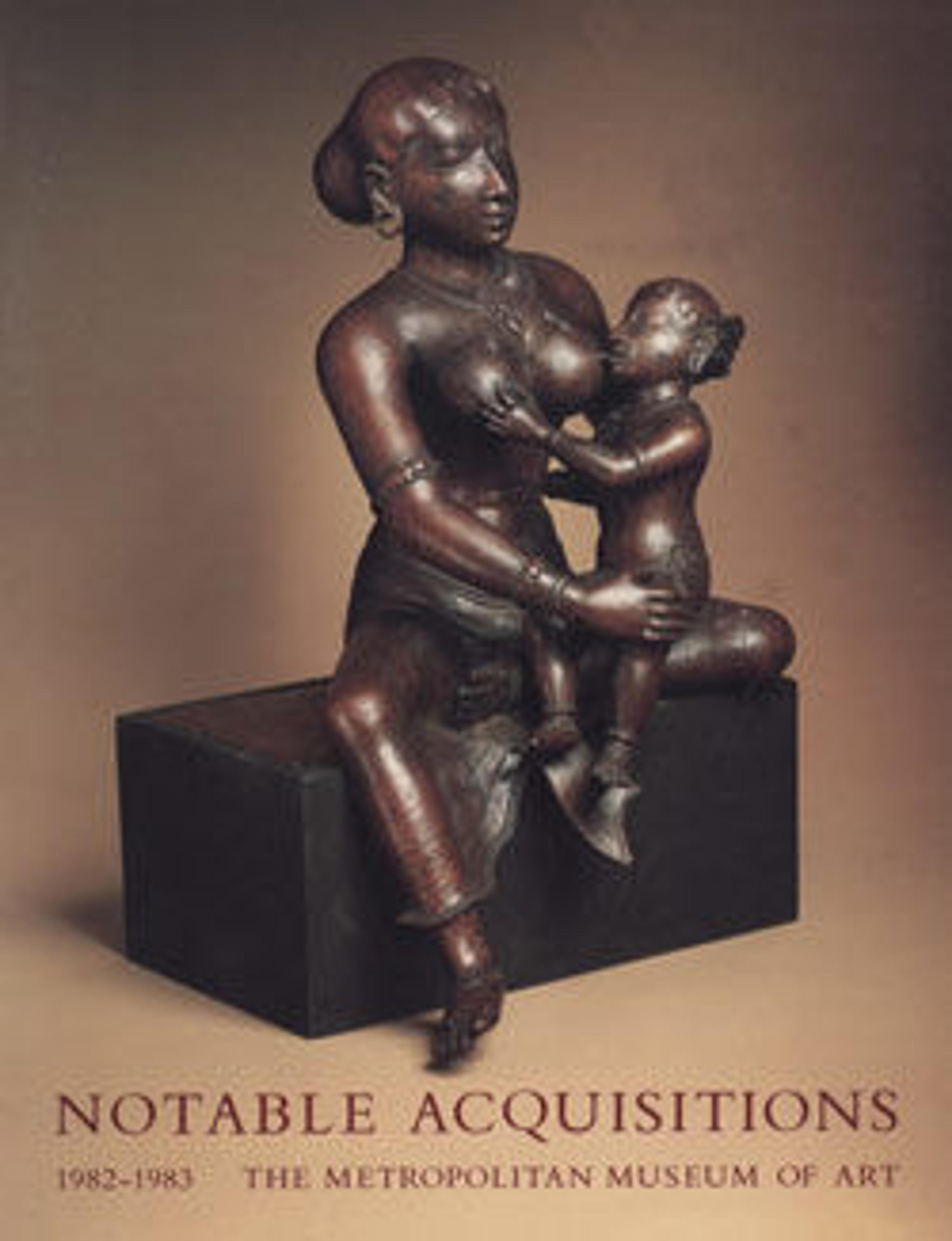Goblet
The taste for engraved glass, which accounted for a part of German and Austrian glass production throughout the eighteenth century, fell away toward the end of the century. However, engraving on glass did continue in the first half of the nineteenth century, especially for private clients by self-employed artisans. Dominik Biemann was one of the best of these. He was trained as a glass engraver with the wheel at Karkachov, then in Austrian Silesia (modern Czechoslovakia), until 1825. He later worked in Prague, where in the sixteenth century engraving on glass had been attempted for the first time in Europe since the Roman period. Based in Prague, Biemann made himself available to receive orders for portraits and other special commissions during the season at the fashionable spa-resort of Franzenbad, where he settled in 1828. The silver cover of this goblet (1982.97.10b) is hallmarked for Vienna, 1854. The invention of the daguerreotype diminished interest in engraved portraits after about 1840; hunting and genre scenes like the one on this piece are more typical of work from the last years of Biemann’s life.
Artwork Details
- Title:Goblet
- Engraver:Dominik Bimann (Bohemian, Harrachsdorf 1800–1857 Eger)
- Date:ca. 1840
- Culture:Austrian, probably Vienna
- Medium:Glass
- Dimensions:Height: 7 7/8 in. (20 cm)
- Classification:Glass
- Credit Line:Gift of Dr. Eugen Grabscheid, 1982
- Object Number:1982.97.10a
- Curatorial Department: European Sculpture and Decorative Arts
More Artwork
Research Resources
The Met provides unparalleled resources for research and welcomes an international community of students and scholars. The Met's Open Access API is where creators and researchers can connect to the The Met collection. Open Access data and public domain images are available for unrestricted commercial and noncommercial use without permission or fee.
To request images under copyright and other restrictions, please use this Image Request form.
Feedback
We continue to research and examine historical and cultural context for objects in The Met collection. If you have comments or questions about this object record, please contact us using the form below. The Museum looks forward to receiving your comments.
